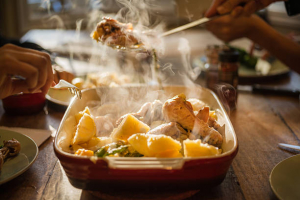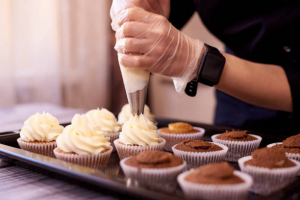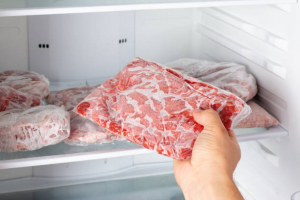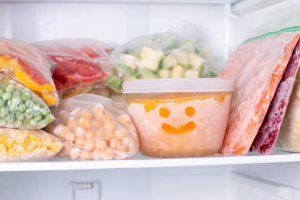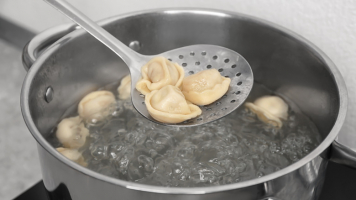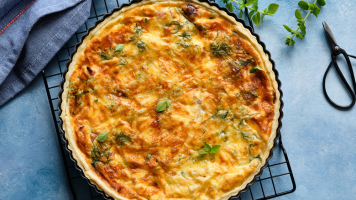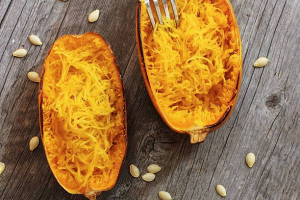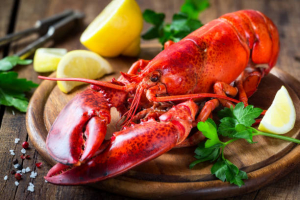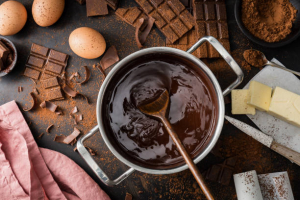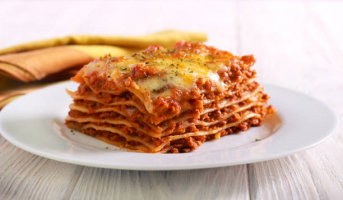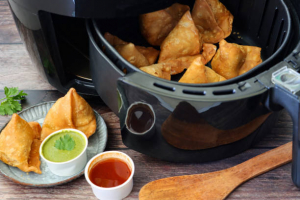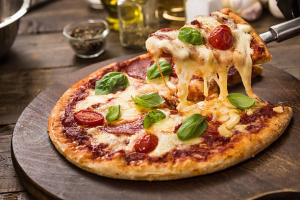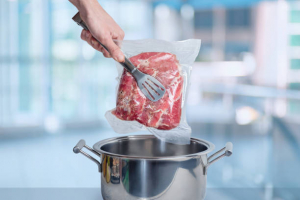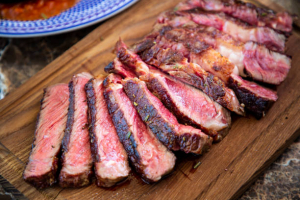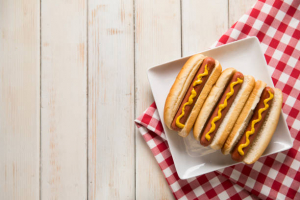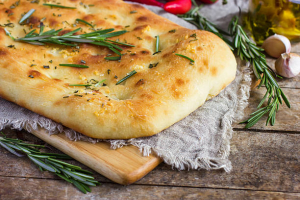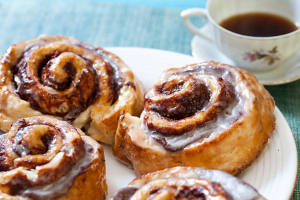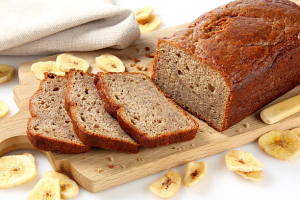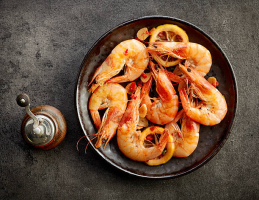Top 10 Biggest Mistakes Everyone Makes When Frying Food
There's nothing quite like deep-fried. Frying anything, whether it's chicken, potatoes, onions, or even ice cream or green tomatoes, ensures that it tastes ... read more...delicious. However, deep-frying is time-consuming, and it takes some serious skill to transform a regular potato into a crispy, delicious french fry. There are several common frying mistakes that everyone makes, so read on if you want to avoid burning, undercooking, or simply ruining your food.
-
Before you even attempt deep-frying at home, one of the most important issues to address is safety. If you're not prepared for the worst, hot oil bubbling on the stovetop could spell disaster! First and foremost, if you have small children in your home, make sure they are otherwise occupied before you begin. You want your entire attention to be on the frying, not on curious little hands! The BBC recommends keeping children out of the kitchen while frying, and turning panhandles away from the front of the range. Not only will this keep small fingers from accidentally pulling the pan off the stove, but it will also keep adults from accidentally jostling or knocking the pan.
Set a well-fitting lid nearby before you begin cooking to help you extinguish a fire if necessary. Water is far more dangerous in the event of a grease fire! You should devote your full attention to frying. If you leave frying food alone, the oil may overheat, increasing the risk of smoke or fire.
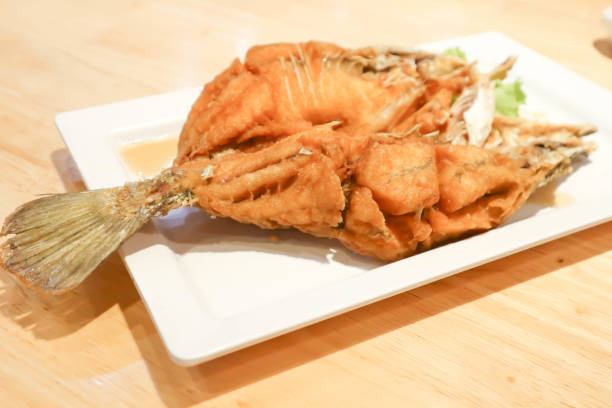
Not taking the proper safety precautions before you begin 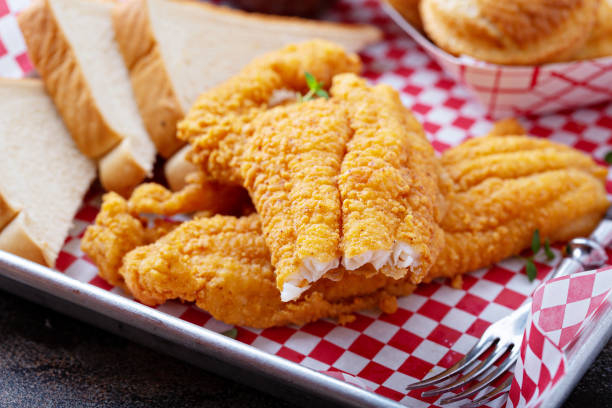
Not taking the proper safety precautions before you begin -
A deep-fat fryer is used by chefs in professional kitchens to help chicken, fries, and other foods reach crispy perfection, but most home cooks don't have the space for one. As a result, a pan is usually the best option. But, despite time-honored recipes, you don't have to use a skillet or even a frying pan, no matter how apt its name!
While such a vessel may appear to be far larger than you require, using one for deep-frying has numerous advantages. Contrary to popular belief, cast iron is not a good heat conductor. It is an excellent heat retainer, which means that your oil will be less likely to cool when you add cold food. Crisper, more evenly cooked mozzarella sticks or fish and chips are the result. A Dutch oven is also a good choice in terms of safety: its large volume capacity eliminates the risk of your oil bubbling over the edges as your food fries.
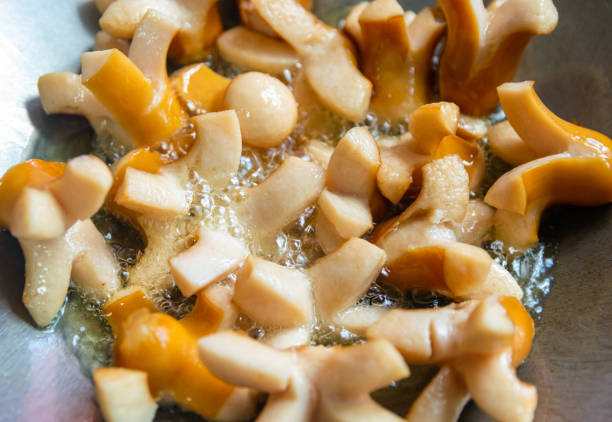
Using the wrong pan for deep-frying 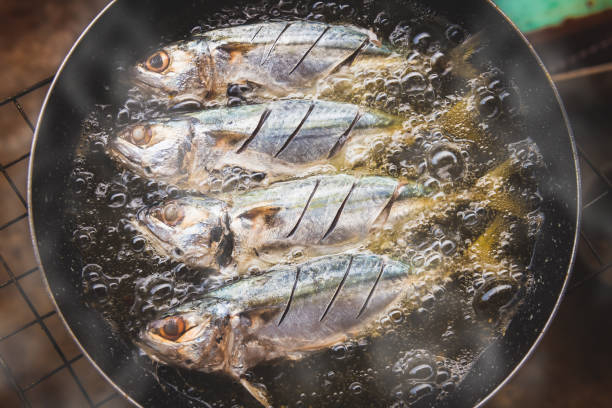
Using the wrong pan for deep-frying -
If you're afraid of burning your fried food, it might be tempting to keep the temperature low – or, at the very least, lower than the recipe calls for. However, for an outstanding finished dish, you must be daring. Lowering the temperature risks causing your food to absorb the frying oil rather than frying in it. According to Taste of Home, the end result could be soggy, greasy, and unappealing food.
The outlet provides a temperature chart organized by different common fried foods to help you hit that perfect temperature, making it easy to find your target temp. If you're using a pot instead of a tabletop fryer with precise temperature control, get a thermometer and check the heat before and after adding the food to the oil. As a general rule, look for physical signs that the oil has reached the proper temperature (such as food sizzling or floating) or isn't quite there (like sinking or burning).
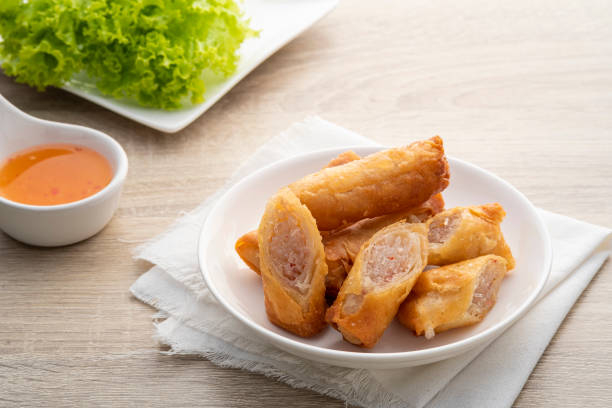
Frying at too low of a temperature 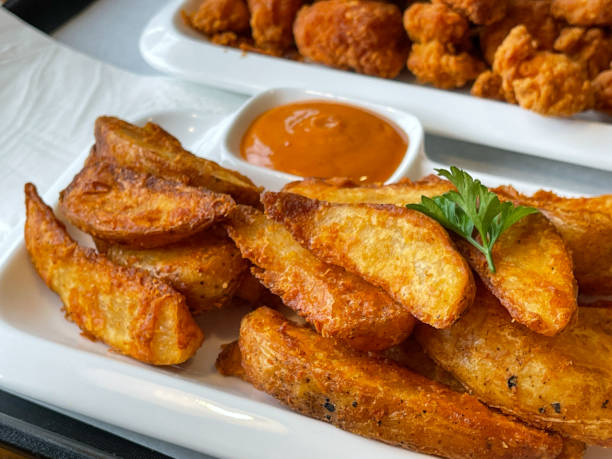
Frying at too low of a temperature -
Seasoning occurs before the food ever enters the pan or the oven in the case of most cooking, whether sautéing, roasting, or baking. When deep-frying, however, you'll want to flip that rule. According to Food Above Gold, salt can cause the oil to pop and burn you while cooking.
Instead, wait until the food is fully cooked before transferring it to a pan or a paper towel-lined plate to drain. Simply season the food with salt while it is still hot so that it adheres to the still-damp surface. If you leave the salt on the food for too long, it will fall off and season the plate instead. Of course, you can flavor the brine, as in this pickle juice fried chicken recipe, or season the egg wash or batter to season the fried food.
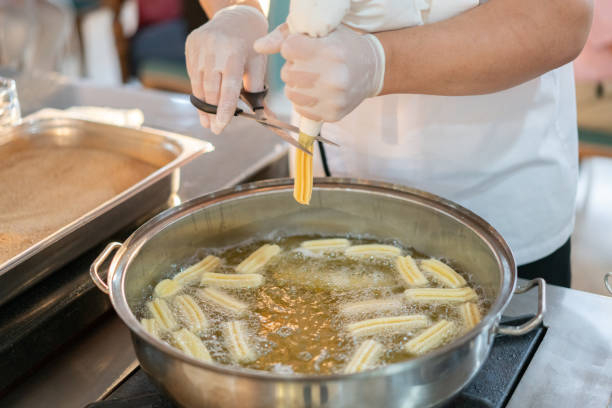
Salting food before deep-frying it 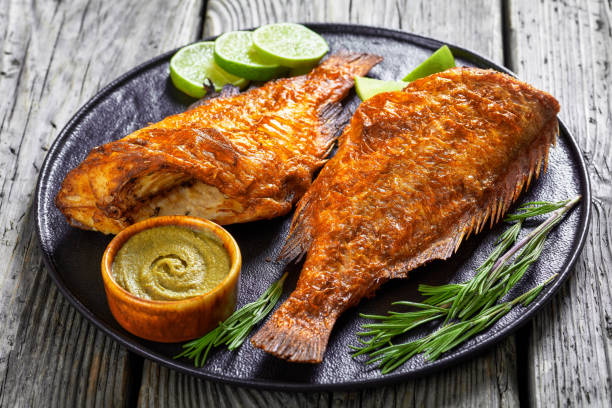
Salting food before deep-frying it -
That delicious crispy coating is one of the most popular aspects of fried food. What a letdown when the outer layer becomes greasy, soft, burned, or, worst of all, simply falls off! To achieve the golden-brown crust of your dreams, you'll need to batter or bread the food. In either case, you'll probably start with a flour dredge, which will help the batter or breading adhere to the food, according to The Spruce Eats.
When it comes to battering, whether you go for a light and crispy batter made with sparkling water or a heartier batter made with beer, time is of the essence. Make the batter just before using and set up a station so that each piece of food can be dipped into the batter right before adding it to the hot oil, minimizing mess. Another method for creating a crispy coating is breading, which requires three distinct steps. Dredge the food, then dip it in egg to help the breading adhere, and finally coat it in bread, which can be made from regular breadcrumbs, panko breadcrumbs, or even seasoned breadcrumbs.
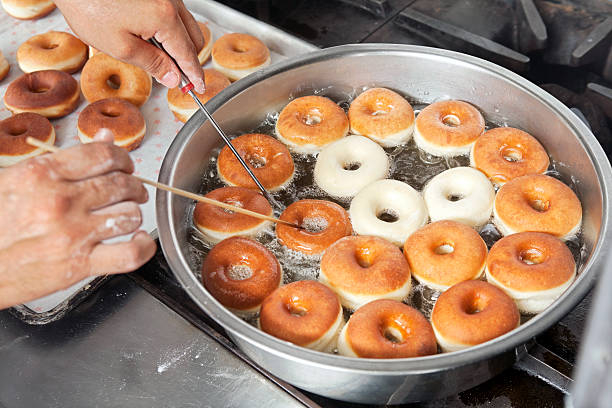
Battering or breading fried food improperly 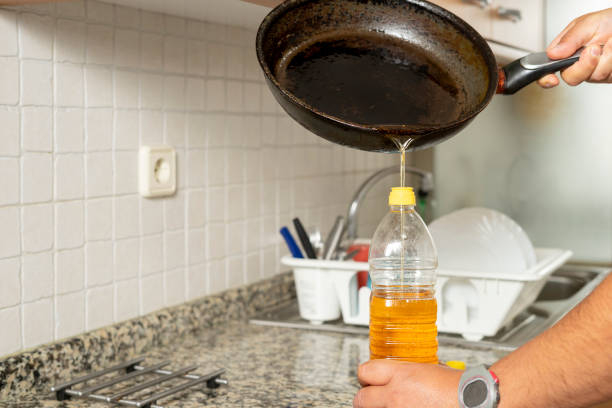
Battering or breading fried food improperly -
According to Decoding Delicious, when you add food to a deep fryer (or, for that matter, a pan) and it immediately begins to spurt sizzle, and bubble, what you're hearing and seeing is the naturally present moisture quickly evaporating in contact with the hot oil. Water boils at 212 degrees Fahrenheit, so when you heat oil to 350 degrees Fahrenheit or higher, it's no surprise that the moisture in a given food will quickly heat and turn to vapor when the two come into contact.
While water is present in all foods - from a raw potato wedge on its way to becoming a French fry to the beer batter on your fish for fish and chips - deep-frying food that is too wet is not a good idea. Not only will batter or breading not adhere to wet food but if it isn't patted dry before diving into hot oil, the splatter and sizzle from wet food can easily burn you.
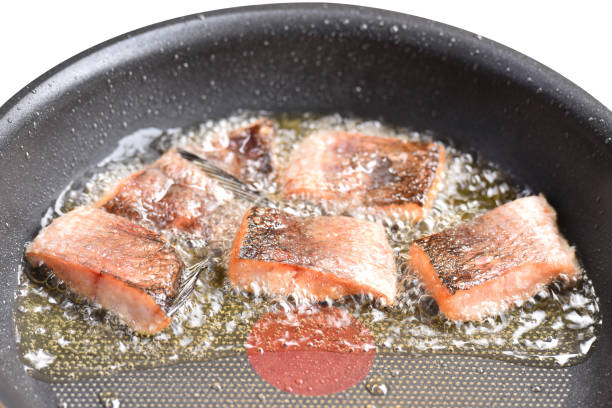
Attempting to fry wet food 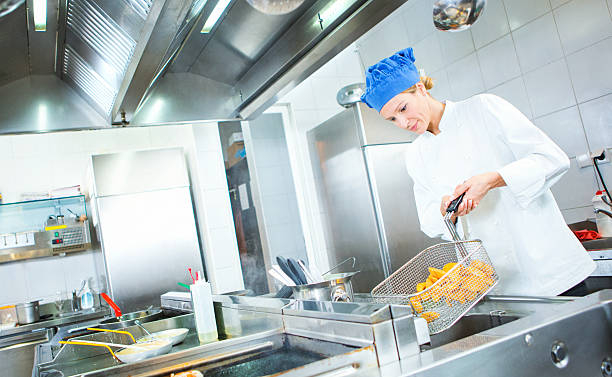
Attempting to fry wet food -
Frying must take place at a high temperature. Otherwise, your food will absorb the oil before it has a chance to cook, leaving it soggy and greasy. However, this does not imply that a higher temperature will result in otherworldly crispiness! Cooks Illustrated recommends not heating your oil above 375 degrees Fahrenheit, depending on what you're cooking. Any more, and the oil will start to smoke and impart a bitter flavor to your food. Worse, it has the potential to cause cancer.
According to Serious Eats, different oils reach their smoke point at different times. Deep-frying is typically done with oils that have a relatively high smoke point, such as peanut or safflower, giving you some leeway in terms of ideal temperature. This is all the more reason to keep an eye on your fried foods as they cook and not leave them on the stove for too long.
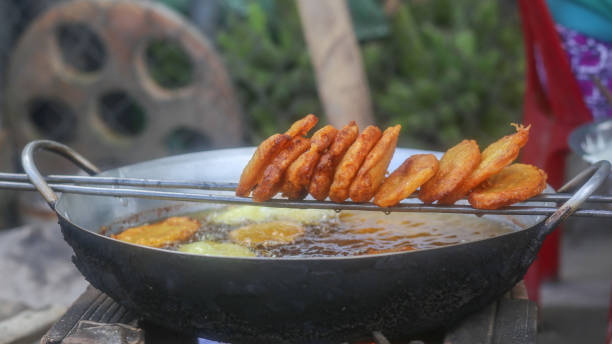
Overheating frying oil 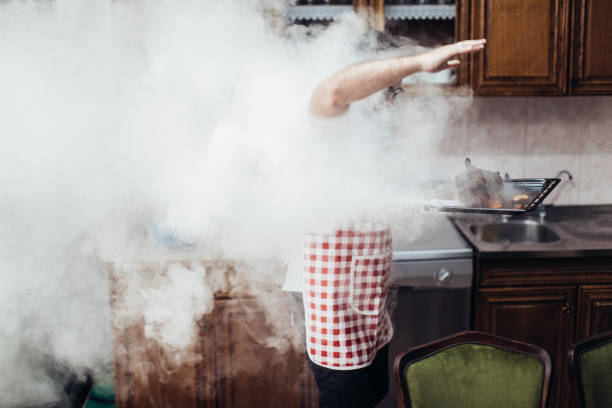
Overheating frying oil -
When frying potato chips, you can tell when they're done by looking for a color change. However, in the case of other foods, particularly those that are unpleasant or even dangerous when consumed raw, such as chicken, an external golden brown is insufficient. Instead, keep track of how long the food has been in the fryer to ensure it's fully cooked before removing it.
Taste of Home provides approximate cooking times for commonly fried foods such as fish, chicken, and doughnuts. Timing is, of course, only a guideline, especially since the temperature of the fryer oil can drop when a large amount of cold food is added. As a secondary method of determining when food is done, the outlet provides the internal temperature you should aim for, which you can check with a probe thermometer before removing the rest of the batch from the oil.
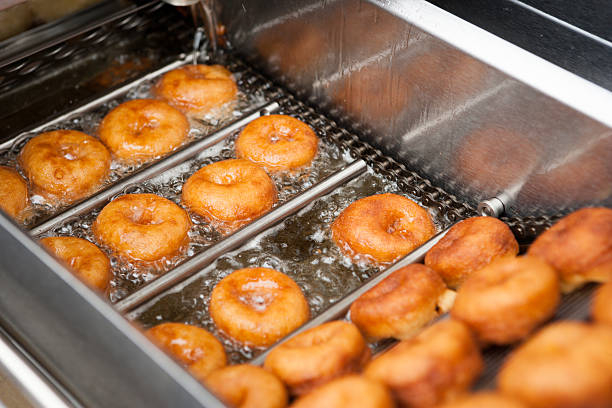
Not frying foods for long enough 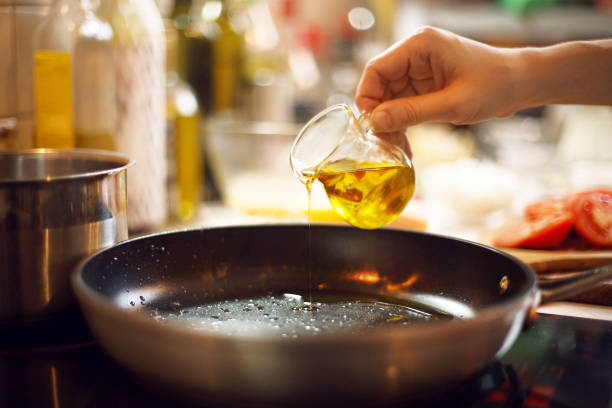
Not frying foods for long enough -
Maintaining an even temperature throughout the cooking process is essential for successful deep-frying, which means that overcrowding the pan is your worst enemy. The reason for this is simple physics. Adding cold food to hot oil will naturally lower the temperature, similar to adding ice cubes to a hot drink. The lower the temperature of the oil, the longer it takes to return to its ideal temperature, and the greater your chances of getting greasy instead of crispy food.
As a result, according to CulinaryLore, it's critical to fry in small batches. This prevents the oil temperature from falling too low, allowing you to maintain the ideal temperature for each batch. If you're frying a large quantity of food and are concerned about the first batches becoming cold before you've finished, The Spruce Eats recommends placing any cooked food on a cooling rack set over a baking sheet and placing it in a low or warm oven until you've finished frying the rest.
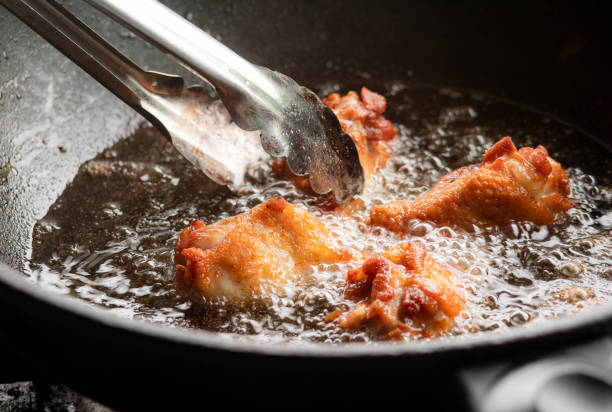
Overcrowding the frying pan 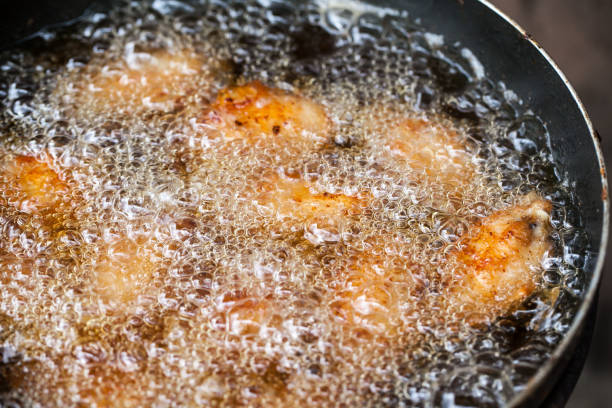
Overcrowding the frying pan -
When it comes to eating, there's no time to waste after you've finished deep-frying. The Spruce Eats warns that if you don't dig in as soon as it's ready, the food will become soggy. And that timetable is ideal because post-fry cleanup should only take place after the oil has completely cooled.
According to Budget Dumpster, oil should always be handled cold and should never be poured down the drain or flushed down the toilet, lest it clogs your plumbing! Instead, transfer the oil into a disposable container. Frying oil can also be reused several times if it has not been overheated. Simply strain it through a fine-mesh sieve or cheesecloth and store it in the refrigerator. Reuse it no more than a few times, and always smell it before using it to ensure it hasn't gone rancid. According to the outlet, some cities also allow you to recycle your oil.
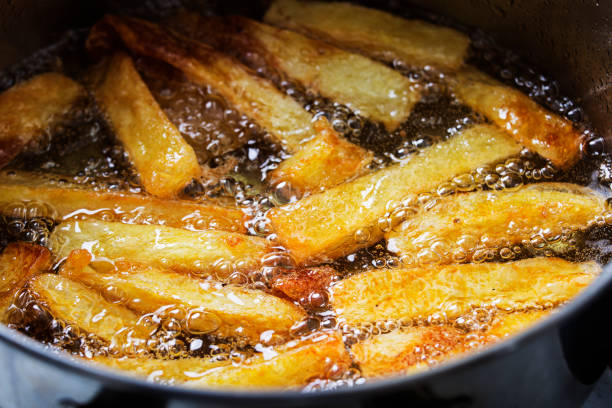
Disposing of oil improperly 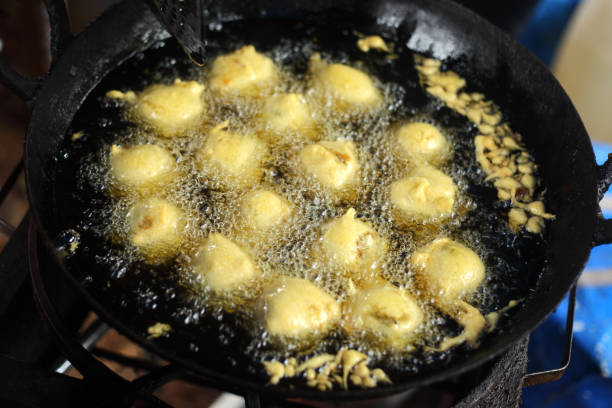
Disposing of oil improperly












